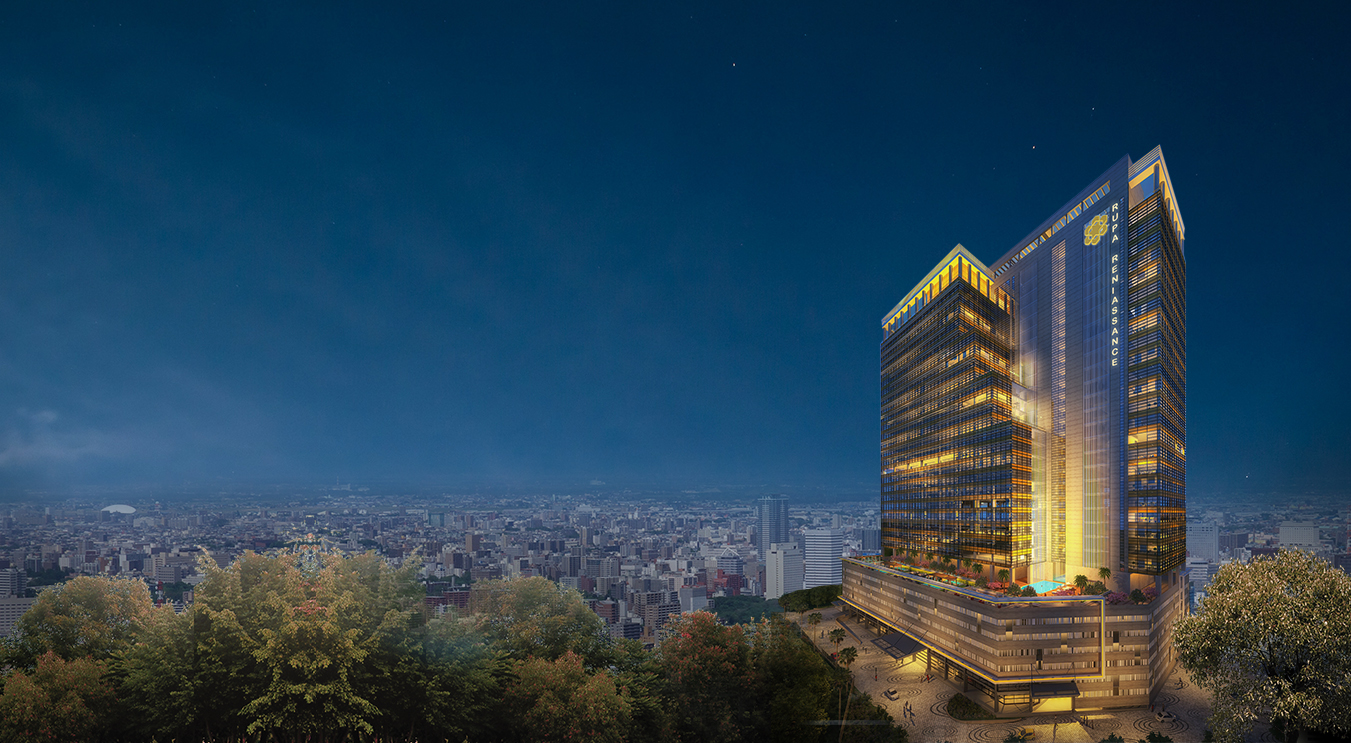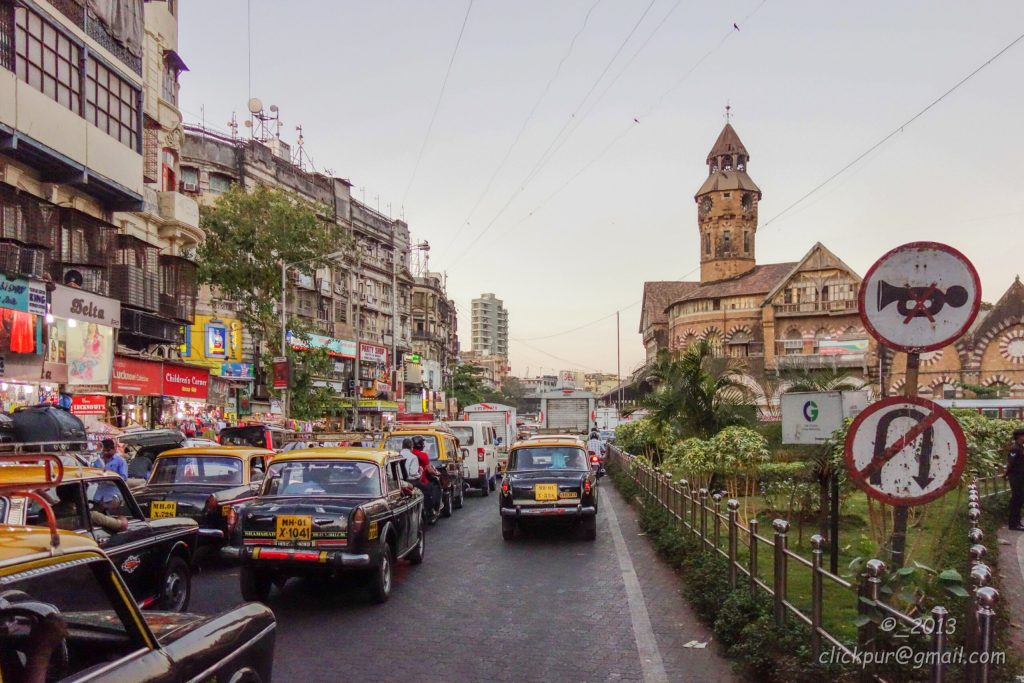Architizer’s 13th A+Awards features a suite of sustainability-focused categories recognizing designers that are building a greener industry — and a better future. Start your entry to receive global recognition for your work!
Mumbai is a city of contrasts: ancient yet avant-garde, prosperous yet poverty-stricken, swarming yet often serene. Unlike many other cities that are strictly dissected by class and creed, Mumbai is a blend from one street to the next, with land being far more important than location. The resulting architectural diversity, characterized by dense polarity, is captivating.
The 19th century brought laborers to then Bombay’s flourishing docks and textile mills. An influx of people from all over the continent saw the city bursting at its seams, and make-shift neighborhoods were quickly erected to house the workers while long-term solutions were conceived in the form of “chawls.” Chawls are tenement buildings that are seemingly simple, utilitarian blocks densely packed along narrow lanes. These innovative buildings revolutionized communities in Mumbai, not only sheltering families under challenging conditions but also becoming a design testbed for creative architectural solutions, many of which continue to be replicated in community architecture to this day.
Today, a century later, Mumbai has one of the most unequal distributions of land in the world, with about 60 percent of the city’s population living in temporary structures that are built on about 8 percent of the total urban area. More than 20 million people live there — a number that continues to grow. The city’s pressing issue of density, which currently stands at approximately 83,660 people per square mile, urgently needs to be addressed, and it would seem that the once imaginative chawls will be the first to go. Conversations have hence intensified about whether a quintessential piece of Mumbai’s identity is about to be relegated to history.
Udaykumar PR, Lohar Chawl,LTRoad,Mumbai – panoramio (1), CC BY 3.0
The chawls that emerged in the decades after the plague of 1896 were prompted by necessity. The Bombay Improvement Trust was formed to address overcrowding and public health crises, and it helped shape policies that led to quick, functional housing solutions. Mill owners and private investors soon adapted these guidelines to create multi-level buildings linked by shared corridors, communal lavatories and narrow balconies. While most early chawls had minimal decorative flourishes, many still exhibited thoughtful considerations. Materials such as brick, stone and wood permitted cross-ventilation in a climate notorious for high humidity. Sloping roofs deflected the monsoon rains that pummel the city from June to October, and covered walkways provided shaded pockets of interaction.
Living space was often cramped, so daily life spilled out onto these semi-public zones. Residents found themselves cooking in stairwells, sewing in corridors or sleeping on balconies. These close-quarters encounters served as a constant thread connecting people who arrived from vastly different backgrounds. In many ways, the chawls were vertical villages in which personal privacy was scant, but social ties were strong. The enforced mingling seeded a culture of interdependence, bridging faith, language and class in a city whose population would eventually mushroom beyond all expectations.
For observers of modern architecture, the chawls offer a window into grassroots design strategies. Architects frequently laud the extensive balconies and external corridors for enhancing airflow and creating shaded thresholds — early predecessors to the brise-soleil or louvered façades seen in contemporary architecture. Ground-floor storefronts, common in many chawls, set a precedent for mixed-use formats that urban planners now champion as a way to nurture vibrant street life. Even the open-air corridors and shared terraces that appear in many sustainable housing developments echo longstanding chawl features.
Yet their significance was not limited to architectural characteristics. Social historians point to the chawls’ integral role in shaping Mumbai’s unique culture. The strict limits on personal space are frequently cited as catalysts for collective love affair with cinema that is so prevalent in the city. Old photos of mid-century movie theaters, packed with chawl dwellers eager to escape claustrophobic rooms, reveal just how important the big screen became; Bollywood boomed thanks to the communities looking for respite.
As the city’s industrial fortunes shifted — spurred partly by the Great Bombay Textile Strike of 1982 and the gradual collapse of many mills — the chawls’ fate also changed course. Industrial labor migration slowed, land values soared and rent controls kept many tenants paying negligible monthly sums. These factors combined to deter basic maintenance. Timber beams rotted, plumbing systems leaked and exteriors showed deep cracks While some residents managed to renovate individual properties, broader structural concerns became too costly for landlords bound to archaic rent regulations.
In recent years, the state government has advocated for large-scale redevelopment, eyeing the potential for high-rise towers on land that is among the world’s most expensive. Residents, for their part, stand to gain larger apartments and updated amenities (at least in theory). Critics, however, see troubling precedents. Other “slum rehabilitation” and tenement-replacement initiatives in Mumbai have often delivered subpar construction, missed deadlines or saddled residents with hefty upkeep fees. Even if new apartments come with more floor space, high maintenance bills can dislodge longtime tenants accustomed to paying a fraction of that cost. The delicate balance of preserving affordable housing in a prime location, critics warn, may be lost in a push for profit.

World One by Pei Cobb Freed & Partners Architects, Mumbai, India
It is often noted that the disappearance of cheaper urban housing can hollow out a city’s social fabric by forcing lower-income groups to relocate to remote suburbs. In the past, chawls provided a platform for what might be called everyday collisions: a teacher might live beside a dockworker, or a small shop owner might share a balcony with a mill mechanic. That adjacency — chaotic, multifaceted and surprisingly functional — often led to shared customs, new dialects and an informal support network that cut across class lines. Proponents of preservation argue that the new towers, built behind gates and managed by private security, risk eroding that communal dynamic.
Of course, it is easy to view chawls through a purely romantic lens, ignoring the very real health and structural hazards. By modern standards, cramped living areas, limited privacy and aging infrastructures are less than ideal. Many chawls fail to accommodate basic contemporary needs like car parking, broadband wiring or in-unit sanitary facilities. Retrofitting them can be an expensive gamble, making redevelopment appealing to both residents (who hope for better living conditions) and developers (who see prime real estate). The resulting tension — between heritage and progress, between intangible cultural identity and tangible economic gain — is hardly unique to Mumbai, but it plays out with particular intensity in a city that famously churns out extremes of wealth and poverty side by side.

Rupa Renaissance by Access Architects, Mumbai, India
As it stands, few details can confirm whether the proposed towers will truly integrate the lessons and characteristics of the chawls. Government announcements typically focus on the number of floors, total square footage or projected costs. Meanwhile, original tenants navigate lengthy bureaucratic processes to secure fair relocation terms and fear the day they must move out. Until the new projects are completed, skepticism remains justified.
In many ways, the chawls embody Mumbai’s defining characteristics: resilience, improvisation and a capacity to build communities within tight constraints. They may be perceived as antiquated, decaying and at odds with modern family structures. Still, they have left an undeniable mark on architectural thinking about passive climate control, efficient land use and socially oriented design. Whether that legacy will reemerge in the high-rises that replace them is yet to be seen.
Architizer’s 13th A+Awards features a suite of sustainability-focused categories recognizing designers that are building a greener industry — and a better future. Start your entry to receive global recognition for your work!
Top image: Udaykumar PR, Lohar Chawl, Kalbadevi, Mumbai, Maharashtra, India – panoramio (1), CC BY 3.0

